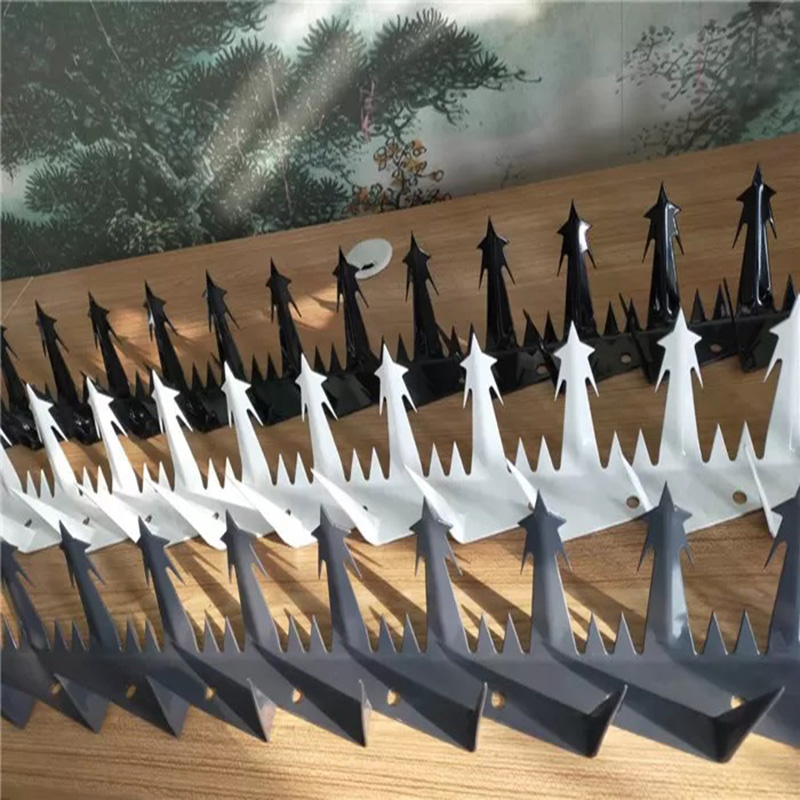-
+86 15030157877
-
sales@galvanizedmetalmesh.com
Oct . 24, 2025 12:20 Back to list
Anti Climb Wall Spikes – Galvanized Steel, Easy Install
Anti Climb Wall Spikes have been around for decades, but the last few years reshaped the category. Rising demand from logistics hubs, schools, and utility operators means better coatings, cleaner installs, and, frankly, smarter deterrence. Based in South Industrial Zone 07, Anping County, Hebei, China, the Wall Spike line I’ve seen most often in the field is a no‑nonsense option—razor spikes that sit on top of walls and fences, three sizes (small, middle, max), and hardware that doesn’t fuss.

What’s actually new in this niche?
- Color-matched powder coats for estates and data centers (no more prison-yard vibe).
- C3–C4 corrosion systems for coastal installs.
- Quick-mount bases that line up with common masonry anchors—saves installers a Saturday.
Core specifications (Wall Spike series)
| Type | Spike height ≈ | Base width ≈ | Thickness | Material | Finish options |
|---|---|---|---|---|---|
| Small | 50–80 mm | ≈ 35–45 mm | 0.8–1.0 mm | Galv. steel (Z275) or SS304 | Hot‑dip galvanizing; polyester powder 60–80 μm |
| Middle | 100–120 mm | ≈ 50–60 mm | 1.0–1.2 mm | Galv. steel (Z275) or SS304 | Hot‑dip; powder coat RAL colors |
| Max | 150–200 mm (double row) | ≈ 70–80 mm | 1.2–1.5 mm | Galv. steel (Z350+) or SS304 | Hot‑dip; marine-grade powders |
Real‑world use may vary with substrate, climate, and maintenance. Pre‑punched oval slots suit M6/M8 anchors.

Materials, making, and testing
Process flow: coil select (Q235/Z275 or SS304) → press-punch forming → edge deburring → hot‑dip galvanizing (ASTM A123/A153) or electrostatic powder coating → QC (coating thickness, adhesion) → packaging with caps. Typical test data we’ve seen: ISO 9227 NSS 480–1000 h depending on finish; powder adhesion per ASTM D3359 4B–5B; visual inspection for burrs to protect installers (and wildlife). Service life: galvanized 8–15 years; powder over zinc 10–18 years; stainless 15–25 years, depending on C-class environment and upkeep.
Where they work best
- Distribution centers, substations, and telecom sites.
- Schools and hospitals (usually the Small or Middle type; signage required).
- Rail/transport corridors and compound walls.
- Private villas wanting discreet deterrence. To be honest, color-matched Middle type is the sweet spot.
Note: follow local rules on reasonable use and warning signs; keep spikes above reachable height.

Vendor snapshot (what buyers compare)
| Vendor | MOQ | Coatings | Certs | Lead time ≈ | Customization |
|---|---|---|---|---|---|
| Anping manufacturer (origin site) | 100–300 m | Hot‑dip, powder, SS | ISO 9001; coating test reports | 12–20 days | Type, color, hole pattern, logos |
| Regional importer | In‑stock | Powder (limited RAL) | Basic CoC | 2–5 days | Low |
| DIY retailer | Pack of 10–20 | Painted | None/limited | 48–72 h | None |
Customization notes
Colors (popular: RAL 6005, 7016, 9005), base widths to suit narrow cappings, extra countersunk holes for steel posts, and pre‑packed “sign kit” add‑ons. Many customers say the pre‑drilled templates cut install time by a third—surprisingly impactful on big runs.

Two quick case notes
- Southeast Asia logistics park: Middle type over a 1.8 m masonry wall; powder over zinc, 720 h NSS passed, zero red rust at 14 months—client liked the muted gray.
- UK academy perimeter: Small type along rooflines; clear warning signs installed. Facility manager told me, “no more weekend climbers,” which is the whole point.
Why choose Anti Climb Wall Spikes over taller fencing?
Lower capex, minimal footprint, works with existing walls, and fast installs. The deterrence is psychological and physical. However, do keep spikes above hand height and clearly signposted—reasonable use matters.
Compliance and documentation
- Material certs: EN 10204 3.1 upon request.
- Galvanizing to ASTM A123/A153; powder per ISO 12944 guidance (C3–C4).
- Corrosion testing to ISO 9227; coating adhesion ASTM D3359.
- Factory QMS: ISO 9001:2015.
Search tip: if you’re speccing for coastal C4/C5, ask for stainless or higher zinc mass and documented salt-spray hours.
References
-
Durable Fence Barbed Wire Solutions for Global Security & Agriculture
NewsNov.24,2025
-
Comprehensive Guide to Barbed Fence Wire – Durability, Uses & Innovations
NewsNov.23,2025
-
Barb Wire Price Per Roll – Understanding Costs, Trends & Global Applications
NewsNov.22,2025
-
Stainless Steel Barbed Wire: Durable Security for Global Industries & Relief Efforts
NewsNov.22,2025
-
Comprehensive Guide to Razor Wire Prices: Factors, Trends & Vendors
NewsNov.21,2025
-
Concertina Razor Wire: The Ultimate Guide to Secure, Practical Barrier Solutions
NewsNov.20,2025



